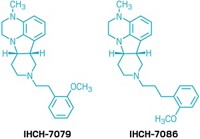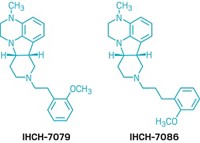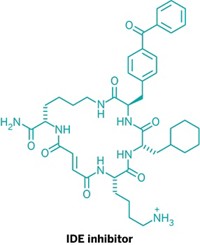Advertisement
Grab your lab coat. Let's get started
Welcome!
Welcome!
Create an account below to get 6 C&EN articles per month, receive newsletters and more - all free.
It seems this is your first time logging in online. Please enter the following information to continue.
As an ACS member you automatically get access to this site. All we need is few more details to create your reading experience.
Not you? Sign in with a different account.
Not you? Sign in with a different account.
ERROR 1
ERROR 1
ERROR 2
ERROR 2
ERROR 2
ERROR 2
ERROR 2
Password and Confirm password must match.
If you have an ACS member number, please enter it here so we can link this account to your membership. (optional)
ERROR 2
ACS values your privacy. By submitting your information, you are gaining access to C&EN and subscribing to our weekly newsletter. We use the information you provide to make your reading experience better, and we will never sell your data to third party members.
Business
Fresh Air For Avandia
Drug Discovery: New diabetes drug insights may revive research efforts
by Carmen Drahl
July 26, 2010
| A version of this story appeared in
Volume 88, Issue 30
By shedding light on how a beleaguered class of antidiabetic drugs exerts its effects, a new study could help chemists design better next-generation medications.

Many patients with type 2 diabetes rely on drugs such as Avandia (rosiglitazone maleate) and Actos (pioglitazone hydrochloride) to increase their bodies’ sensitivity to insulin. Both drugs activate a transcription factor protein called peroxisome proliferator-activated receptor γ (PPARγ), which is a master regulator of cellular metabolism. Many pharmaceutical companies have searched for molecules that activate PPARγ, but most efforts were shelved because of side effects such as weight gain. Avandia itself is under fire because of heart risks (see page 32).
But the antidiabetic effects of Avandia and other PPARγ activators may in fact have little to do with their PPARγ-activating properties, according to a team led by biochemists Bruce M. Spiegelman of the Dana-Farber Cancer Institute of Harvard Medical School and Patrick R. Griffin of Scripps Florida, with physician Matthias Blüher of the University of Leipzig, in Germany. Instead, these researchers say the molecules’ therapeutic benefits can be traced to their ability to prevent a kinase enzyme from placing a phosphate group on PPARγ (Nature 2010, 466, 451). In fact, stimulating PPARγ might even be the reason for the side effects, Spiegelman says. “It ought to be possible to improve this class of drugs by dialing in the ability to inhibit the phosphorylation while dialing out receptor activation,” he says.
Originally, the team was intrigued by a paradox about PPARγ-targeted drugs, Spiegelman explains. Some weak PPARγ activators were just as good as very strong activators at improving cells’ response to insulin. The new study offers an explanation: Strong and weak PPARγ activators are equally good at blocking PPARγ phosphorylation. On the basis of hydrogen-deuterium exchange experiments, the researchers suggest the compounds work by freezing PPARγ into a position that makes phosphorylation difficult.
Further tying phosphorylation inhibition to drug efficacy, in a small number of patients who received Avandia, the team found that lower levels of PPARγ phosphorylation in fat tissue correlated with better antidiabetic effects.
“For years, scientists have known that it was possible to identify ligands that retained the beneficial antidiabetic actions of PPARγ drugs like rosiglitazone while dialing out the weight gain and other side effects,” says Steven A. Kliewer of the University of Texas Southwestern Medical Center, an expert in PPAR receptors. “However, pharmaceutical companies were hesitant to pursue these compounds in the absence of any molecular understanding of why they worked,” he says. “Hopefully this study will reignite interest in PPARγ as a drug discovery target.”






Join the conversation
Contact the reporter
Submit a Letter to the Editor for publication
Engage with us on Twitter